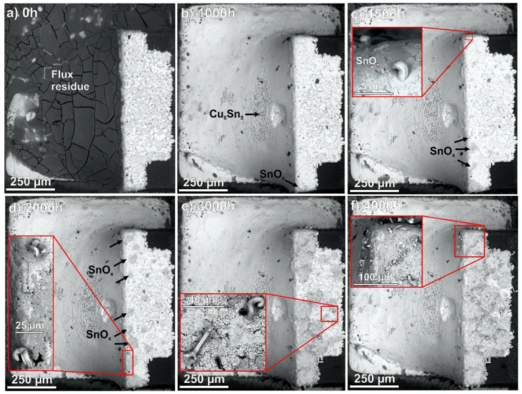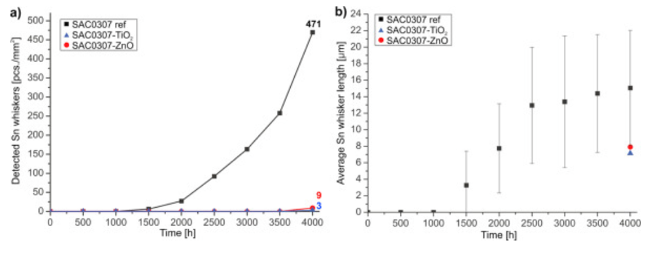Nano-Additives Reduces Tin Whiskers in Solder Pastes_Shenzhen Fitech

Nano-Additives Reduces Tin Whiskers in Solder Pastes_Shenzhen Fitech
Lead-free solder pastes are soldering materials that are most commonly used by packaging manufacturers and can be used for chip soldering and other purposes. One of the most common lead-free solder pastes is the SnAgCu series, including SAC0307, SAC305 and etc. The excellent mechanical strength and conductivity of solder joints made of SAC solder pastes have attracted much attention. However, due to the high content of Sn in this type of solder paste, it is easy to cause tin whisker growth in highly corrosive environments. Tin whiskers are surface defects on pure tin or objects with high tin content, which may cause short circuits between component leads. Generally, solder alloys with low Ag content, such as SAC0307, are more sensitive to whisker growth. Therefore, it is necessary to inhibit the growth of tin whiskers through some means.
Nanocomposite solder paste experiment
Numerous reports have shown that adding specific metals to solder alloys can hinder the appearance of tin whiskers, as the addition of nanoparticles such as TiO2 and ZnO can refine grain size and modify grain boundaries, thereby changing the performance of solder joints. Therefore, Illes et al. prepared SAC0307-TiO2 (0.25 wt%) and SAC0307-ZnO (0.25 wt%) and verified their feasibility. The solder pastes were printed on the PCBs with immersion-Ag solder pads, and then multiple 0603 resistors were mounted on the pads. Finally, the PCBs were reflowed. The samples underwent a damp heat test at 85 ° C/85RH% for 4000 hours to observe the growth of tin whiskers.
Experimental results
As shown in Figure 1, after 1000h of damp heat test, some gray spots appeared on the ordinary SAC0307 solder joint. After 1500h, the first nodular tin whisker appeared at the upper corner of the solder joint. As the damp heat test continued, more tin whiskers appeared. After 3000h, the corroded areas of the solder joints began to connect together, and the number and length of tin whiskers significantly increased.

Figure 1. Tin whisker growth of ordinary SAC0307 solder joints during damp heat test.
Differently, the corrosion of SAC0307-TiO2 (0.25wt%) and SAC0307-ZnO (0.25wt%) solder joints after 4000h of damp heat testing is significantly lower on the surface than that of ordinary SAC0307. Only a small amount of tin whiskers appeared around the corrosion point on the surface of the composite solder joint until 3500h, indicating a slower growth rate of the tin whiskers in the composite solder joint. Therefore, it can be known that nanoparticle doping can significantly improve the corrosion resistance of composite solder joints.

Figure 2. The growth rate of tin whiskers in nanocomposite SAC0307 solder joints during damp heat test.
Adding nanoscale materials such as TiO2 or ZnO can usually refine β- Sn grid, meaning that the grains in the composite solder joint are much smaller than those in the ordinary SAC solder paste. The refined grain size of composite solder joints leads to a wide grain boundary network, thereby achieving higher grain boundary energy. Although high grain boundary free energy can lead to higher corrosion rates, the segregation of TiO2 or ZnO at grain boundaries can form a dense protective oxide layer that improves the corrosion resistance of composite solder joints.
Fitech solder paste
Fitech has many years of research experience in micro/nano-particle reinforced solder paste and has developed a composite Sn42Bi58 solder paste, which can enhance the mechanical properties and anti-aging properties of low-temperature solder paste. Welcome to contact us for more product information.
Reference
Illés, B., Choi, H., Hurtony, T., Dušek, K., Bušek, D. & Skwarek, A., (2022). Suppression of Sn whisker growth from SnAgCu solder alloy with TiO2 and ZnO reinforcement nano-particles by increasing the corrosion resistance of the composite alloy. Journal of Materials Research and Technology, vol. 20, pp. 4231-4240.

















 Back to list
Back to list



